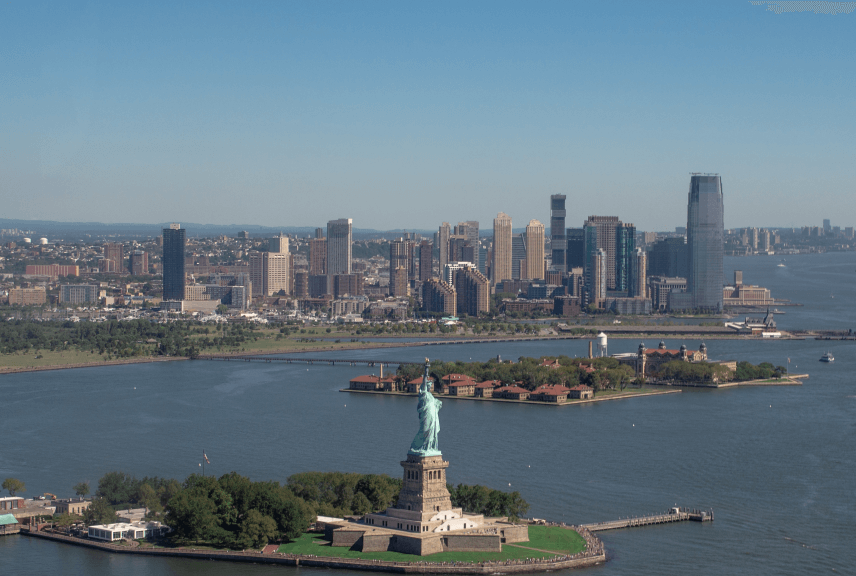Free Baggage Allowance
Weight Concept: For Travel starting from India to Europe/Far East/Middle East a passenger is allowed Free Baggage allowance by the airlines that is based on the class oftravel. A child gets the equivalent allowance as an adult. Infant are not allowed any free baggage allowance, except for items like Strollers or Infant’s utility bag.
Normally, the following entitlement is allowed based on the class of travel :-
First Class: 40 Kg
Business Class: 30 Kg
Economy Class: 20 Kg
Piece Concept:
International Air Transport Association (IATA) has formed certain guidelines and rules for smooth processing of various aspects of travel. The rules framed by IATA are enforced by all member airlines to avoid any ambiguity and ensure service/quality standards.
Countries where the piece system applies:
Between USA/US Territories and all countries.
Between Canada and Europe, Middle East, Southern Africa, South Asian Subcontinent, the Far East except Guam and South West Pacific, Argentina, Bolivia, Brazil, Chile, Mexico, Panama, Paraguay, Peru, Uruguay.
Between the Far East and Argentina, Bolivia, Brazil, Chile, Panama, Paraguay, Peru, Uruguay, Mexico, USA.
Between Guam/Saipan and Japan, Okinawa, Hong Kong, Korea Republic, China,
Taiwan, Philippines, Thailand, Indonesia, Malaysia, Singapore, India.
Between Pago Pago and South West Pacific.
The normal Free Baggage Allowance:
First and business class passengers
2 bags (pieces) where the total of the three dimensions does not exceed 158 cm(62 inches) for each bag.
Economy class passengers
2 bags (pieces) where the total of the three dimensions for any one bag does not exceed 158 cm (62 inches) and where the total for both bags does not exceed 273
cm (107 inches).
Maximum weight of any one bag is 32 kg (70 lb) except within North America where it is 23 kg(50 lb). (Note: domestic airlines within USA may apply a Free Baggage
Allowance based on a weight or piece system.
Children are entitled to the same free baggage allowance as adult passengers.
Infants not entitled to a seat are allowed one checked bag of which the total of the three dimensions should not exceed 115 cm (45 inches) plus one fully collapsible stroller or pushchair.
Articles considered as a single piece of baggage
The following articles, irrespective of their actual dimensions, may be
considered as a piece of baggage at 135 cm (53 inches):
one sleeping bag or bedroll.
one rucksack/knapsack/backpack.
one pair of snow skis with one pair of ski poles and one pair of ski boots.
one golf bag, golf clubs and pair of golf shoes.
one duffle-type bag of B-4 type bag.
one suitably packed bicycle.
one pair of standard water skis or one slalom water ski.
suitably packed fishing equipment comprising not more than two rods, one reel,
one landing net, one pair of fishing boots and one fishing tackle box.
certain sporting firearms (subject to each airlines conditions of carriage).
any portable musical instrument not exceeding 100 cm (39 inches) in length.
Cabin Baggage Allowance
With ever growing emphasis on security and to avoid over crowding of Inside
Cabin luggage overhead bins, airlines are are now enforcing the principle of One cabin baggage in all parts of the world.
Coats, Canes, umbrellas, reading material, small purses/camera cases don’t usually count against your carry-on allowance. Backpacks, laptops, large purses or briefcases may be counted especially on crowded flights. Most of the cabin / check-in baggage restrictions are based on Linear inches that can be described in layman terms as total of length + width + height. One small bag or one garment bag whose three dimensions should not exceed 115cm/45in and the maximum weight should be 10kgs.
Excess Baggage Charge
The Excess Baggage Charge levied on baggage in excess of the free allowance is determined by a number of factors : the city or country of departure; city or country of arrival; and , in a number of instances, by the airline of travel. Each combination of factors has a standard Excess Baggage Fee.
Each bag in excess of of the number permitted which does not exceed the dimensions/weight limits is charged at the standard fee.
If within the baggage allowance a bag exceeds the dimensions limit for free carriage but does not exceed 203 cm (80 inches) and is within the weight limit, the standard fee is still applied. However, any bag both in excess of the number and dimensions, but where the sum of the three dimensions does not exceed 203 cm (80 inches) and is within the weight limit, twice the standard fee is charged.
Any piece of baggage in excess of 203 cm (80 inches) or in excess of the 32 kg (70 lb) or, within North America 23 kg (50 lb), weight limit will not be carried unless prior handling arrangements are made with the airline. If accepted for carriage, such bags are weighed and charged at three times the standard fee for each additional 10 kg (22 lb) or fraction thereof.
Special charges
Special charges apply for the carriage of :
Bulky or fragile items as hand baggage warranting the use of one or more additional seats. To/from the USA the normal piece system excess charges apply but the minimum charge will be 75% of the full one-way adult fare for the class used by the passenger. Elsewhere, a standard excess charge of 75% of the full one-way adult fare for the class used by the passenger applies. Accompanied pets . The animal and container cannot be allowed in the passenger’s free allowance. To/from USA the normal excess baggage fee is charged. Elsewhere, the charge is twice the standard fee.
Snow skiing and golf equipment. If in excess of the normal free allowance, one set of skis/ski poles/ski boots will be carried at 25% of the standard excess baggage fee and one golf bag/golf shoes at 50% of the standard fee. Additional sets are charged at the full standard fee.
Incidents of Lost Baggage/ Delay /Damaged Baggage
Even though airlines try to ensure that the checked-in baggage arrive at the destination in safe condition and at the same time as the passenger, there are cases of Lost or Damaged baggage due to in-flight/airport/transit mishandling of the baggage by the airline staff. Again IATA helps the passenger to claim his loss based on certain rules and regulations.
Lost Baggage: If the baggage on arrival is found to be missing, passenger must file a complaint with the concerned airline immediately. In most of the developed countries the process of retrieving the baggage is quick and delivery process smooth, with airlines delivering the luggage at the doorstep of passenger. However in India the process is not as smooth.
Once the baggage is reported lost by the passenger, he must take Property Irregularity Report (PIR) that is issued by all airlines. In India, passenger must get this PIR endorsed by Customs before leaving Airport premises, as
failure to do so will result in customs charging Duty on the goods being claimed. Once you take the PIR for customs endorsement, they would value the Duty Free allowance being claimed and balance due so that when passenger comes
to the airport for retrieval of his/her lost baggage the same is given to him.
If the airline is unable to retrieve your lost baggage and declares it Lost and unrecoverable, then the compensation process is activated. As per IATA guidelines, passenger is entitled for claim with maximum liability of the airline being limited to USD 20 per Kg or a maximum of USD 635 per piece of checked-in baggage. For items checked-in with Limited Liability baggage tags, different compensation rules apply. this amount can be higher if the lost/damaged bag was Insured.
Damaged Baggage: Damage to the checked-in baggage are governed by various rules, that primarily regulates the type of damage. An airline will not be liable for normal wear and tear/scratches, manufacturers defect etc.
Any damage to the baggage should be reported to the concerned airline immediately, within 24 hrs of arrival at the airport. In case of the travel being made through a combination of various airline alliance partners, the delivering carrier is held responsible.
Ensure Your Baggage Safety:
To avoid the possibility of losing your baggage either due to airline’s fault or a fellow passenger’s fault because of identical appearance of the baggage – Label all your baggage with Name Label, that gives your address, destination port, telephone number etc. Lock all bags and remove old destination and identification tags before checking baggage.
Never put Cash, Jewellery, Electronic equipment, computers in the checked-in baggage, as airlines will not be liable for any loss/damage.
Dangerous Goods
For safety reasons, the dangerous articles listed below must not be carried in passengers baggage-
briefcases with built-in alarms or lithium batteries and/or pyrotechnic materials compressed gases/inflammable or not/toxic/refrigerated liquids like camping gas devices corrosive products/acids/mercury/alkali/wet batteries flammable liquids/coal gas/paints and thinners
asbestos
materials
oxidizing
agents such as chloride of lime and peroxide
flammable
solids/matches and materials which ignite easily substances capable of spontaneous combustion or which on contact with water emit
flammable gases
poisonous
and infectious substances
radioactive
substances
















